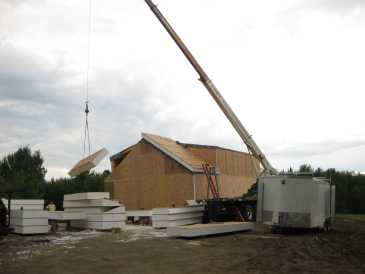 |
The east side of the house. After the timber frame was complete, it was covered with SIPs,
which form the walls and roof. SIPs (Structural Insulated Panels) consist of two sheets of
plywood, with expanded polystyrene (styrofoam) in between. Here, one is being hoisted by
a crane onto the roof. |
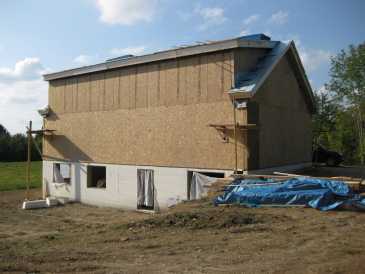 |
The southeast corner. SIPs can be made in a variety of thicknesses, depending on the
insulation value desired. Two different thicknesses can be seen in the second-to-last
picture on the timber frame page. |
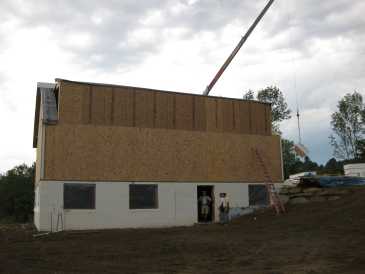 |
This is a view of the south wall. The thinner SIPs are used for the walls. They're 6 inches
thick and have an R-value of 26.5. Since heat rises, thicker ones were used for the roof.
These were a mixture of 12 and 14 inches thick, and had R-values of 49 and 53, respectively. |
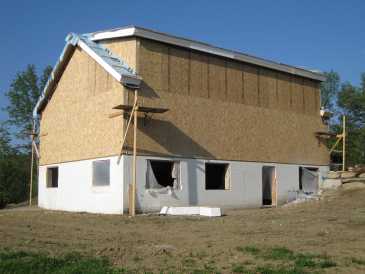 |
The southwest corner. |
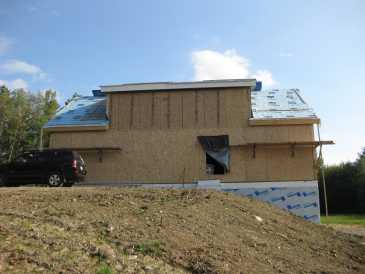 |
The north side. Once the SIPs are in place, the roofing material will go on top of that. |
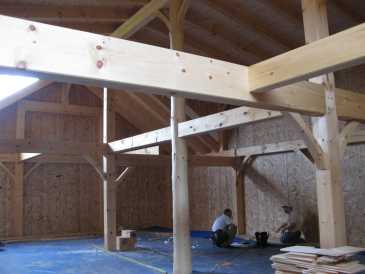 |
Here we have the interior. There are still one or two SIPs waiting to go on, which is why
there's light inside. No window holes have been cut yet. |
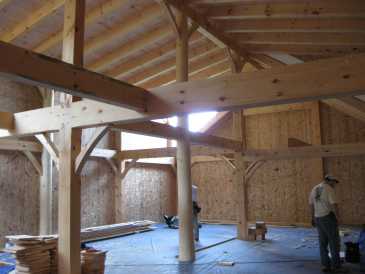 |
Another view of the inside. When they closed up that last hole, it was DARK. |
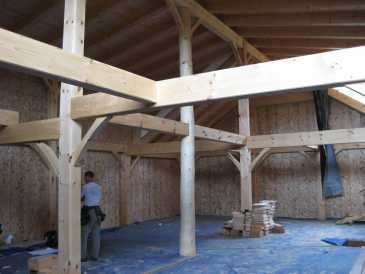 |
Looking in the other direction. You can see the round post in the middle of the room. |
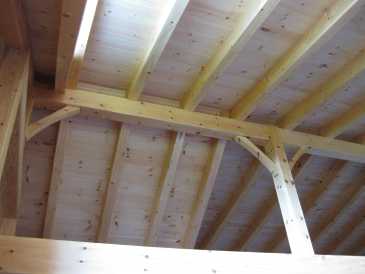 |
Looking up at the ceiling. The ceiling boards are white pine, to match the wood used for the
timber frame. The boards are toungue & groove, and were supplied by M.B. Heath & Sons Lumber,
a sawmill on the other side of town. The roof SIPs were placed on top of these boards. |
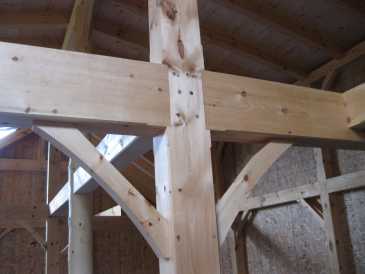 |
A view of some of the nice joinery done by Vermont Frames. |